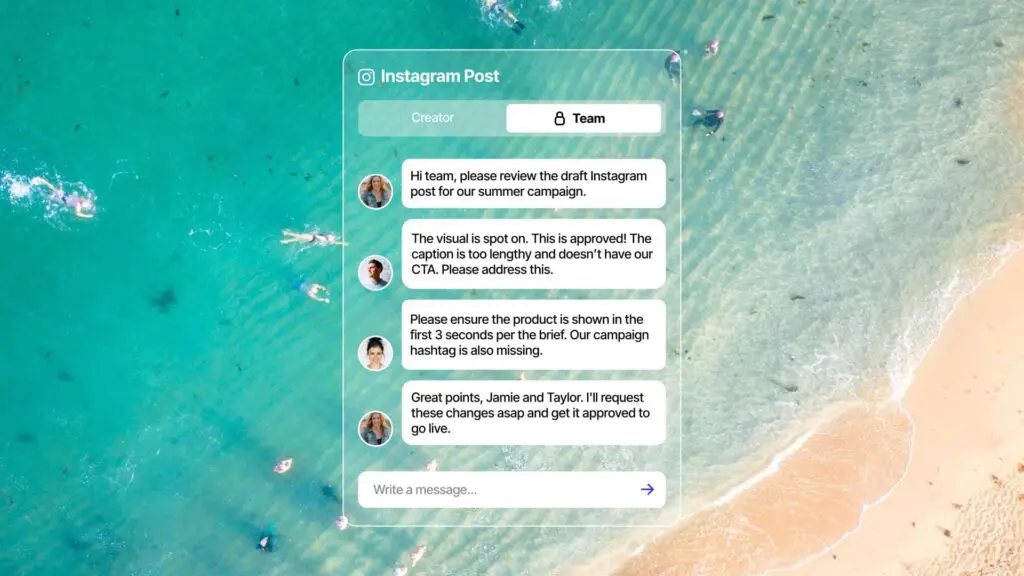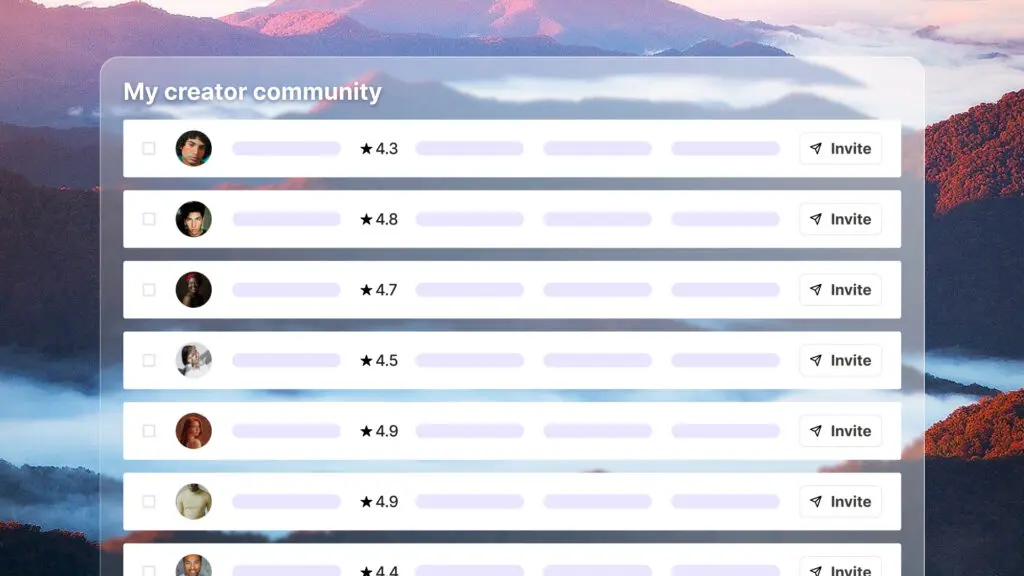

Or that Anthropologie saw a significant surge in searches – an increase of more than 1,057% year-on-year – and capitalised on this using social commerce?
There’s a lot of value in curating a social commerce presence. McKinsey believes it’s an emergent shopping transformation that makes it easier for people to purchase goods wherever they may be – online, on their phone, on social media, or on a whim.
It’s already immensely popular in the East, and this trend is swooping on over to the rest of the world very quickly.
In this post, we talk about everything you need to know about activating social commerce and getting the most value from your social presence.
Social commerce is, very simply, the ability to buy and sell items from within social media channels. It takes the immediacy and vibrancy of social media to a whole new level by allowing users to interact with your store or your products and then purchase them immediately.
Frictionless, simple, and smart, it really is a very clever way to build a brand and market share while delivering an amazing customer experience.

Social commerce is very specifically selling items and services via social media channels. E-commerce is used to describe all forms of buying and selling items and services online.
E-commerce includes websites, social channels, email, mobile platforms, SaaS platforms, and everything in between. Social commerce zooms right in to connect with people at the very edge of their engagement – on social media.
Most social media platforms have social commerce functionality. Facebook, Instagram, and Pinterest have established social commerce features, YouTube, Meta, and TikTok are trying out different solutions, and Twitter is also looking at different social commerce options.
TikTok Shop is the in-app social commerce platform for TikTok sellers and users. The platform describes it as an ‘e-commerce solution integrated within TikTok’, and it offers people three ways to connect with their favourite brands.
Sellers can start a live shopping event and buyers can just tap on the products and buy them while watching; brands can use shoppable videos that offer the same feature – tap and shop; or users can shop directly from a brand or creator account within TikTok. You can also use the TikTok affiliate marketplace to boost sales and revenue streams.
Instagram Shopping offers you the ability to create content that’s interactive and engaging and which allows shoppers to make purchases in real time. As this is such a visual platform, you can create really immersive experiences for your shoppers. A recent survey by Instagram found that half of the respondents used Instagram to shop every single week.
Using it is simple. You create a storefront, customize it with collections, themes, trends, or new arrivals, add in product details, and then allow people to checkout using the app. Instagram now lets people checkout within the app rather than forcing them out to your website, which really streamlines the experience. You can also add in product tags to make it easy for people to find you and your products.

Facebook probably has the most advanced social commerce solution on the market as it’s been around for a while. There’s Facebook marketplace, Meta Pay, and a highly developed advertising ecosystem. Facebook Marketplace is primarily a customer-to-customer space, but brands have also benefited from having a presence there.
Facebook Shops is a more brands-focused shopping space that’s designed to make social commerce as smooth as possible for brands and customers. However, it’s worth noting that Facebook and Instagram are both phasing out shops that don’t use their checkout tools. It’s a very convenient social commerce platform, though, as users can just tap on an ad and buy what they want in-app without having to ever leave the platform.
Twitter launched its social commerce function in June 2022 in collaboration with Shopify. Entitled the Twitter Shopping ecosystem, it allows you to make it simple for customers to find and buy your products on the social platform. Using the Shopify app, users can onboard Twitter Shopping Manager, automatically sync their inventory, and highlight their products for more traction.
The shopping ecosystem includes Shops, Spotlights, Live Shopping, and Product Drops. Each one of these functionalities allows you to engage with your customers in different ways.
Pinterest also moved its social commerce capabilities into high gear in 2022 with a bunch of cool features designed to help brands connect with shoppers. The Pinterest API allows brands to add a catalogue and share accurate pricing information in real time.
Brands can add shoppable Pins that allow users to engage in real time, add shopping tabs to their profiles, and use videos to create engagement with shoppers. Earlier in 2023, Pinterest announced that it plans to increase its social commerce capabilities this year so that anything and everything on the platform can be shoppable.

Clambering aboard the social commerce bandwagon alongside Pinterest and Twitter, YouTube has set about creating frictionless shopping experiences. Along with Twitter and TikTok, YouTube has also partnered with Shopify to allow creators to link their products within videos.
YouTube Shopping automatically syncs products to YouTube so users can make purchases from live streams and videos. People can shop while they watch, and brands can pin their products and win!
Social commerce can be found in multiple different applications and approaches. The following are the most common:
There are some key trends emerging in social commerce this year:
Here are some of the most impressive social commerce statistics to date:
You can use a variety of different strategies to get your social commerce working and your customers engaging.
Skullcandy used social commerce to launch its 12 Moods campaign on Instagram and YouTube. Users could tap and purchase directly from the campaign.
The Body Shop’s strategy was to use images and vibrant colours on Facebook and Instagram shops to transform their digital stores into social engagements that made shoppers feel like they were part of an experience.
You can enhance your social commerce strategy by establishing what your audience is saying about your brand using social media sentiment, and then using that to create a campaign that really resonates with your audience.
Vamp has plenty of tools to help you manage your social commerce campaigns, including our social media calendar, our in-depth list of social media agencies to help with your campaigns, a complete list of social media management tools and social media analytics tools, and lots more besides.
Implementing social commerce can be complex, and businesses often encounter several challenges. One common issue is integrating social commerce into existing systems. Many companies already have established e-commerce platforms, and ensuring seamless integration between these and social commerce platforms can require significant technical resources. To address this, businesses should invest in robust APIs and platforms that allow for easy integration, while also working closely with IT teams to test and troubleshoot any issues.
Another challenge is maintaining customer trust and data privacy. With social commerce relying heavily on user data for personalised shopping experiences, businesses must comply with privacy regulations like GDPR or CCPA. Transparent communication about data usage, robust security measures, and providing customers with control over their data can help mitigate concerns.
Logistical challenges, such as managing inventory across multiple sales channels or handling customer service inquiries, are also prevalent. Businesses can overcome these by adopting centralised inventory management systems and ensuring their customer service teams are trained to handle queries originating from social media platforms effectively.
To measure the success of social commerce strategies, businesses need to identify the right metrics that align with their goals. Sales performance is a key indicator, including metrics such as revenue generated through social commerce platforms, average order value, and conversion rates. Tracking these numbers provides insight into how effectively social commerce drives purchases.
Engagement metrics are also critical. These include likes, shares, comments, and direct messages received on social media. High engagement often indicates that the content resonates with the audience, which can lead to increased trust and eventual purchases.
Customer acquisition and retention rates are equally important. Businesses can track how many new customers are coming from social commerce and whether those customers return for repeat purchases. Tools like UTM parameters and analytics dashboards provided by platforms like Instagram and TikTok can offer valuable data for these evaluations.
Lastly, businesses should assess the return on ad spend (ROAS) and the effectiveness of paid campaigns within social commerce. By analysing these metrics, companies can determine whether their investment is yielding adequate results and refine their strategies accordingly.
Social commerce is evolving rapidly, and businesses need to stay ahead of emerging trends to remain competitive. One notable trend is the rise of live shopping events. Platforms like Instagram, TikTok, and Facebook are increasingly supporting live-streamed shopping experiences, where influencers or brands showcase products in real time and allow viewers to purchase directly. These events create a sense of urgency and interactivity that drives sales.
Another trend is the integration of augmented reality (AR) for virtual try-ons. This technology enables customers to visualise how products, such as clothing, accessories, or cosmetics, will look on them before making a purchase. AR enhances the shopping experience and reduces the likelihood of returns, making it a valuable tool for businesses.
Regional growth in social commerce, particularly in emerging markets, is also a significant trend. Countries in Asia, Africa, and South America are experiencing a surge in mobile internet usage and social media adoption, creating new opportunities for businesses to expand their reach.
Finally, the blending of social commerce with influencer marketing continues to grow. As influencers become key drivers of purchasing decisions, brands are collaborating more deeply with creators to produce authentic and shoppable content that directly engages their target audiences.
Find out more about Vamp and get started with your next campaign today.


| Cookie | Duration | Description |
|---|---|---|
| __cf_bm | 30 minutes | This cookie, set by Cloudflare, is used to support Cloudflare Bot Management. |
| _abck | 1 year | This cookie is used to detect and defend when a client attempt to replay a cookie.This cookie manages the interaction with online bots and takes the appropriate actions. |
| _GRECAPTCHA | 5 months 27 days | This cookie is set by the Google recaptcha service to identify bots to protect the website against malicious spam attacks. |
| bm_sz | 4 hours | This cookie is set by the provider Akamai Bot Manager. This cookie is used to manage the interaction with the online bots. It also helps in fraud preventions |
| cookielawinfo-checkbox-advertisement | 1 year | Set by the GDPR Cookie Consent plugin, this cookie is used to record the user consent for the cookies in the "Advertisement" category . |
| cookielawinfo-checkbox-analytics | 11 months | This cookie is set by GDPR Cookie Consent plugin. The cookie is used to store the user consent for the cookies in the category "Analytics". |
| cookielawinfo-checkbox-functional | 11 months | The cookie is set by GDPR cookie consent to record the user consent for the cookies in the category "Functional". |
| cookielawinfo-checkbox-necessary | 11 months | This cookie is set by GDPR Cookie Consent plugin. The cookies is used to store the user consent for the cookies in the category "Necessary". |
| cookielawinfo-checkbox-others | 11 months | This cookie is set by GDPR Cookie Consent plugin. The cookie is used to store the user consent for the cookies in the category "Other. |
| cookielawinfo-checkbox-performance | 11 months | This cookie is set by GDPR Cookie Consent plugin. The cookie is used to store the user consent for the cookies in the category "Performance". |
| CookieLawInfoConsent | 1 year | Records the default button state of the corresponding category & the status of CCPA. It works only in coordination with the primary cookie. |
| csrftoken | past | This cookie is associated with Django web development platform for python. Used to help protect the website against Cross-Site Request Forgery attacks |
| elementor | never | This cookie is used by the website's WordPress theme. It allows the website owner to implement or change the website's content in real-time. |
| viewed_cookie_policy | 11 months | The cookie is set by the GDPR Cookie Consent plugin and is used to store whether or not user has consented to the use of cookies. It does not store any personal data. |
| Cookie | Duration | Description |
|---|---|---|
| __hssc | 30 minutes | HubSpot sets this cookie to keep track of sessions and to determine if HubSpot should increment the session number and timestamps in the __hstc cookie. |
| __hssrc | session | This cookie is set by Hubspot whenever it changes the session cookie. The __hssrc cookie set to 1 indicates that the user has restarted the browser, and if the cookie does not exist, it is assumed to be a new session. |
| __hstc | 5 months 27 days | This is the main cookie set by Hubspot, for tracking visitors. It contains the domain, initial timestamp (first visit), last timestamp (last visit), current timestamp (this visit), and session number (increments for each subsequent session). |
| _ga | 2 years | The _ga cookie, installed by Google Analytics, calculates visitor, session and campaign data and also keeps track of site usage for the site's analytics report. The cookie stores information anonymously and assigns a randomly generated number to recognize unique visitors. |
| _ga_56JWQ0019V | 2 years | This cookie is installed by Google Analytics. |
| _gat_UA-132076027-1 | 1 minute | A variation of the _gat cookie set by Google Analytics and Google Tag Manager to allow website owners to track visitor behaviour and measure site performance. The pattern element in the name contains the unique identity number of the account or website it relates to. |
| _gcl_au | 3 months | Provided by Google Tag Manager to experiment advertisement efficiency of websites using their services. |
| _gid | 1 day | Installed by Google Analytics, _gid cookie stores information on how visitors use a website, while also creating an analytics report of the website's performance. Some of the data that are collected include the number of visitors, their source, and the pages they visit anonymously. |
| bscookie | 1 year | LinkedIn sets this cookie to store performed actions on the website. |
| CONSENT | 2 years | YouTube sets this cookie via embedded youtube-videos and registers anonymous statistical data. |
| hubspotutk | 5 months 27 days | HubSpot sets this cookie to keep track of the visitors to the website. This cookie is passed to HubSpot on form submission and used when deduplicating contacts. |
| Cookie | Duration | Description |
|---|---|---|
| _fbp | 3 months | This cookie is set by Facebook to display advertisements when either on Facebook or on a digital platform powered by Facebook advertising, after visiting the website. |
| _pin_unauth | 1 year | This cookie is placed by Pinterest Tag when the user cannot be matched. It contains a unique UUID to group actions across pages. |
| AnalyticsSyncHistory | 1 month | No description |
| bcookie | 1 year | LinkedIn sets this cookie from LinkedIn share buttons and ad tags to recognize browser ID. |
| bscookie | 1 year | LinkedIn sets this cookie to store performed actions on the website. |
| fr | 3 months | Facebook sets this cookie to show relevant advertisements to users by tracking user behaviour across the web, on sites that have Facebook pixel or Facebook social plugin. |
| IDE | 1 year 24 days | Google DoubleClick IDE cookies are used to store information about how the user uses the website to present them with relevant ads and according to the user profile. |
| lang | session | LinkedIn sets this cookie to remember a user's language setting. |
| lidc | 1 day | LinkedIn sets the lidc cookie to facilitate data center selection. |
| MONITOR_WEB_ID | 3 months | The cookie is used by: TikTok The functionality is: to store if the user has seen embedded content. The purpose is: Marketing/Tracking |
| test_cookie | 15 minutes | The test_cookie is set by doubleclick.net and is used to determine if the user's browser supports cookies. |
| ttwid | 1 year | No description available. |
| UserMatchHistory | 1 month | LinkedIn sets this cookie for LinkedIn Ads ID syncing. |
| VISITOR_INFO1_LIVE | 5 months 27 days | A cookie set by YouTube to measure bandwidth that determines whether the user gets the new or old player interface. |
| YSC | session | YSC cookie is set by Youtube and is used to track the views of embedded videos on Youtube pages. |
| yt-remote-connected-devices | never | YouTube sets this cookie to store the video preferences of the user using embedded YouTube video. |
| yt-remote-device-id | never | YouTube sets this cookie to store the video preferences of the user using embedded YouTube video. |
| yt.innertube::nextId | never | This cookie, set by YouTube, registers a unique ID to store data on what videos from YouTube the user has seen. |
| yt.innertube::requests | never | This cookie, set by YouTube, registers a unique ID to store data on what videos from YouTube the user has seen. |
| Cookie | Duration | Description |
|---|---|---|
| li_gc | 5 months 27 days | No description |
| ln_or | 1 day | No description |
| msToken | 10 days | No description |
| wp-wpml_current_language | session | No description available. |